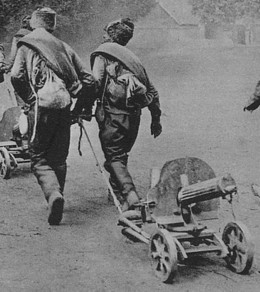
A Russian machine gun from World War I
What led up to World War I?
At the end of the 1800s, many countries around the world were angry. France, Britain, and the United States were controlling most of the world. They took whatever they wanted to make themselves richer.
India under colonial rule
Europe and colonization
The United States expands
All our Modern Europe articles
Everyone wants more colonies
Other people wanted to be richer too. In Central Asia, Russia tried to take over the Ottoman Empire and Afghanistan. But the British and French fought the Crimean War to stop them. Austria wanted to take over Eastern Europe.
The Crimean War
Colonizing Africa
Germany becomes a country
Naples, Tuscany, Lombardy, Venice and Rome united into the new country of Italy in 1870. Prussia, Bavaria, and Saxony united in 1871 to form Germany, and then Germany started trying to get colonies and control sea trade like Britain.
New weapons and World War I
France, Britain, and the United States built stronger and stronger armies to defend their power. They used the new factories and chemistry inventions of the late 1800s to make new kinds of weapons. They made lots of very accurate guns, machine guns, bombs, poison gases, ships, and airplanes.
History of gunpowder
Modern, cheap steel
Oil and gasoline engines
Rubber for the machines
Soon Russia, Germany, and Italy also built big strong armies. But once they had built these strong armies with all kinds of new cool weapons, generals were eager to try them out.
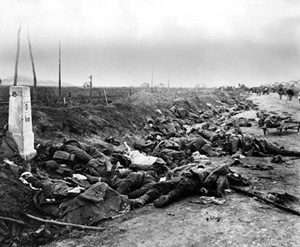
Dead Romanian soldiers (1916)
The beginning of World War I
World War I started in 1914 when Austria invaded Eastern Europe, and right after that Germany invaded France. France, Britain, and the United States fought back as the “Allies”.
Why was Spain neutral?
Spain, which didn’t have the new weapons and had allies on both sides, stayed out of the war.
How many soldiers died?
It turned out to be very easy – surprisingly easy! – to kill a whole lot of people with the new weapons. The generals didn’t know how to stop killing them. Millions of men died: most of the young men of England, France, and Germany died. Many died in horrible ways, poisoned by gas.
Who won the First World War?
Nobody got what they wanted out of World War I. Instead of getting stronger, Germany became weaker. The French wanted to get back the money they had paid Germany in the 1870s, so the Allies demanded that Germany pay a huge fine to them. That left the Germans angry and poor. The Allies forced both the Austrian Empire and the Ottoman Empire to break up into a lot of smaller, weaker countries. In Russia, soldiers angry about losing the war joined a revolution and demanded the redistribution of land.
The Russian Revolution
An influenza epidemic
Many people died of influenza (the flu)
But even the winners ended up weaker than before. Britain soon lost control of Canada, Australia, Egypt, and New Zealand. Ireland and India moved closer to independence too. France began to lose control of Indochina, North Africa, and Madagascar. Not only that, but as the war ended, moving millions of soldiers under bad conditions caused a huge flu epidemic. The flu (influenza) killed many more people than the war itself did, all over the world.
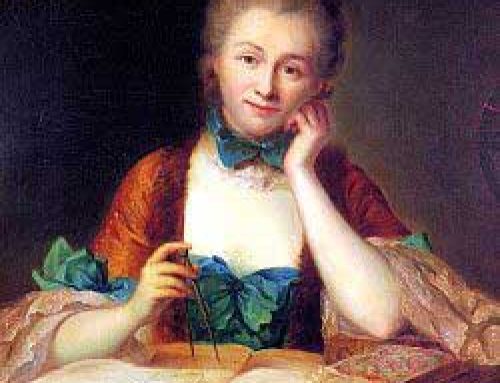

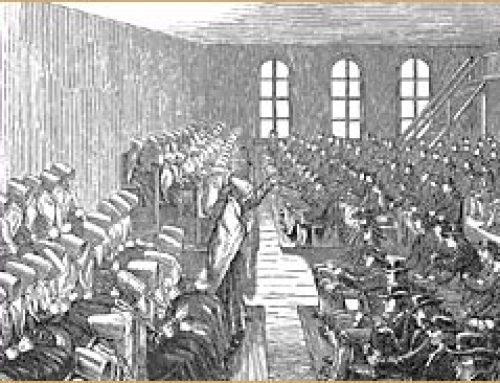
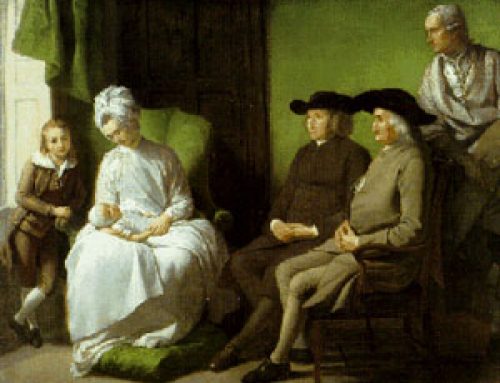

What a really misleading and prejudicial article. This isn’t history, this is propaganda of the lowest sort. If the author really is a professor, heaven help her students
You can find out that I’m really a professor by clicking on the links in my bio, Mr. Quab, so I don’t feel you are at all justified in doubting my word. And it’s another pretty cheap shot to object to the whole article in general without pointing out any assertion of fact that you think is incorrect. How about giving me something more to discuss with you, like what exactly do you think is wrong here? That’s what I would suggest, if my students acted as disrespectfully as you do.